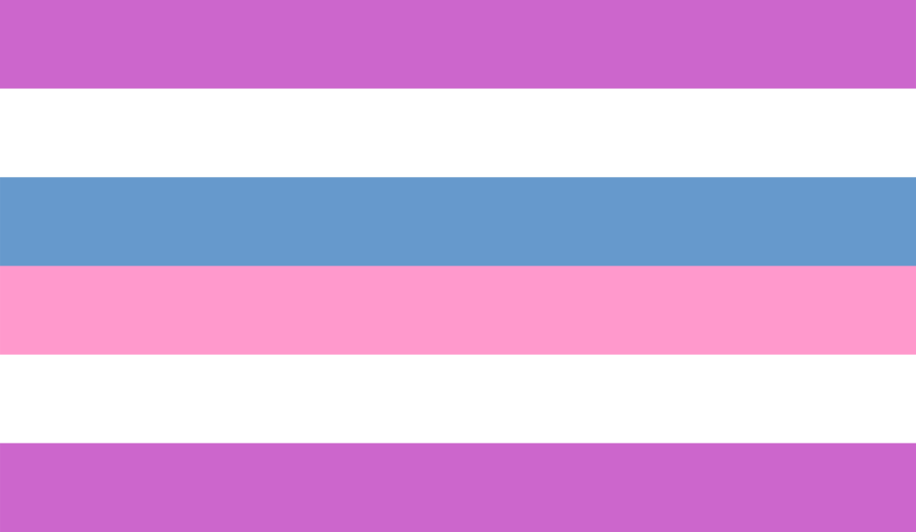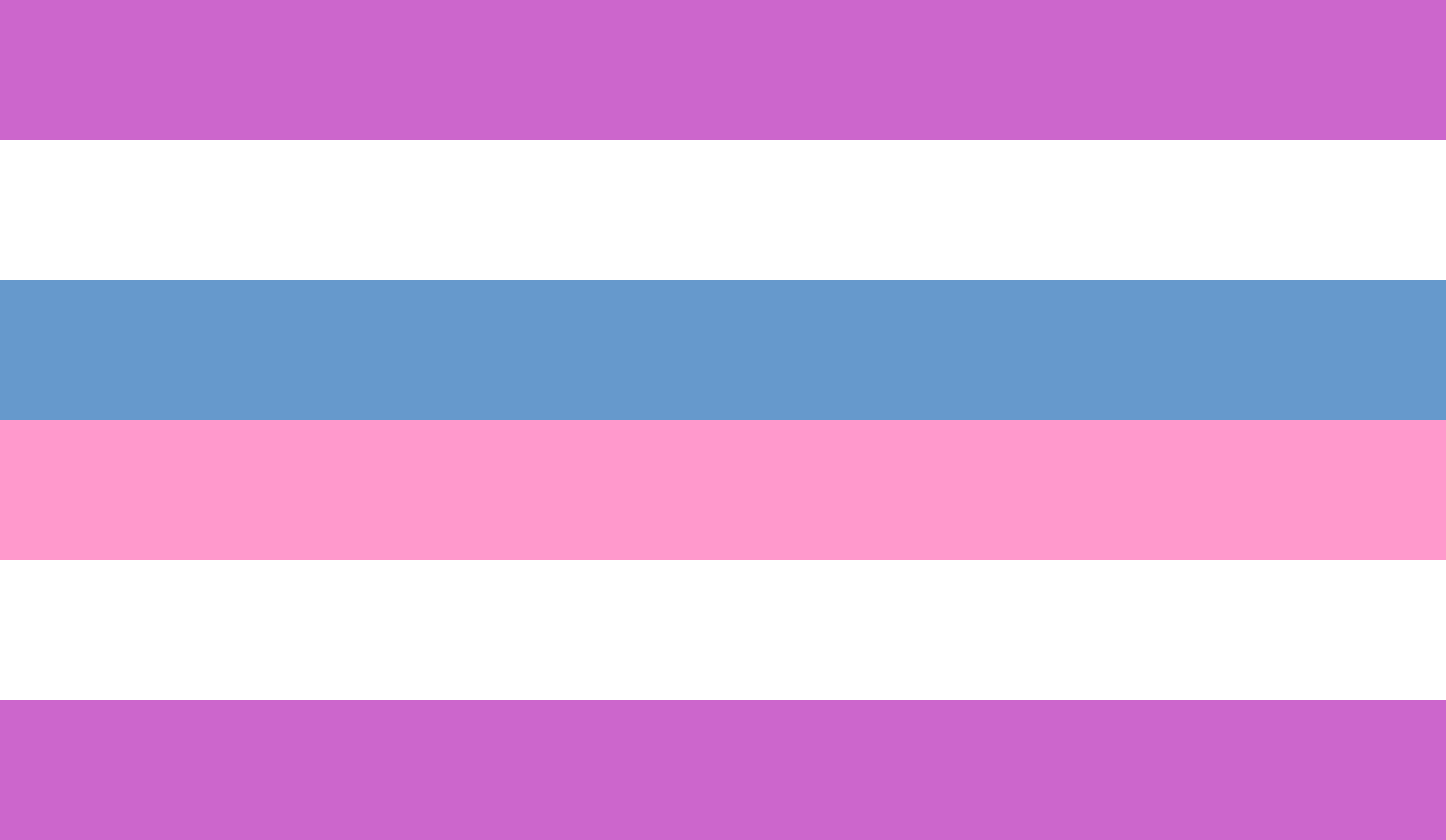Identity is ever-changing, it may be difficult to understand where you stand and that is totally okay! Sexuality and gender is fluid, the most important part is letting yourself explore and learn what you feel the most comfortable with.
In this article, we’ll tackle what it means to be bigender and what it entails to be a part of this community.
What does being bigender mean?
Bigender refers to those who identify as having two genders. This term is not to be confused with bisexual which means to be attracted to more than one gender, bigender refers to gender identity and not sexuality. For example a bigender person might identify as both agender and female or male and non-binary. The possibilities and variations are endless and there is no “right” or “correct” way to be bigender.
Learning that you might be a part of the LGBTQ+ community might be scary at first, but there are many ways to plug yourself into the community and learn to be comfortable with your sexuality.
if you’re curious about how you might identify, here’s what you should know about what being bigender means:
History of the word bigender
The word bigender did not always have the same definition that it has today. Before referring to gender identity, bigender was an early 20th-century biological term for plants that have both male and female reproductive organs. At this point bigender was strictly a scientific term and did not correlate with human gender identity at all.
In the 1970s the word began to shift meaning to something that is fit for both men and women. For example, what we would now call a coed dorm would be a bigender dorm. This change in definition was the catalyst for the definition switching to refer to gender identity.
The term and definition we know today only came to be in the 1990s and 2000s when the term non-binary rose in popularity. Because bigender is under the non-binary umbrella the LGBTQ+ community online helped bring the word into social conversations and define bigender as having two gender identities. In 2014 social media platforms such as Facebook began including bigender as an option when selecting a gender for your profile account.
Alternatives to the word bigender
Because identity is personal and different people are comfortable using different terms there are a variety of ways to say the word bigender, including:
- Nonbinary
- Enby
- Two-spirits
Over time language evolves and this creates new words derived from a multitude of historical nuances. Labels and terms can also carry connotations, bad or good, which is why one might identify more with one term over the other despite them meaning the same thing.
What NOT to call bigender people
Hateful words that refer to the bigender community should always be erased from conversations and speech. The word bigender has gone through many definitions and usages, but negative connotations and stereotypes remain. offensive words such as the F slur should be avoided at all costs, as they are derogatory.
It is also critical to note that members of the bigender community have begun to reclaim derogatory terms to take back the oppression they have faced. Although within the community this is acceptable it is still not okay to refer to bigender people with a derogatory term if one is not a part of the community themselves. Always ask before assuming someone’s sexuality and gender identity.
What makes someone bigender?
Being bigender cannot be defined by one single thing. Some bigender individuals change their pronouns to better fit their gender identity while others change the way they dress. Others might also benefit from medical procedures that help them feel more comfortable in their bodies and help correspond to their gender identity. There is no right way to do it.
It is also important to note that the two genders can either blend and be experienced together or can be completely expressed separately. The way in which masculinity and femininity are explored vary from person to person and situation to situation. The bigender identity falls under the non-binary umbrella which means the approach to gender does not correlate with the “traditional” gender norms that society presents us with.
If you are questioning whether or not you are bigender you might want to ask yourself the following questions: Do you identify with the gender you were assigned at birth? Do you feel like more than one gender suits your identity? If you answered no to the first question and yes to the second, you might want to consider that you don’t fit into traditional gender binaries that society often imposes on us.
Related:
What Does It Mean to be Gynosexual?
If you find that masculine traits are not attractive and instead find that femininity is more appealing to you, you might be gynosexual.
Perspectives on being bigender
Ultimately, all gender identities are deserving of respect. The bigender community, like other LGBTQ+ communities, has faced oppression and a sense of not belonging in a society where things seem to have to be black and white. Putting this hardship into perspective might bring to light what we can all do to make bigender individuals feel comfortable and accepted.
Firstly, it is critical to understand that using a dead name or the wrong pronouns can be devastating for bigender individuals. It’s safe to say that regardless of what assumptions you are making you should ALWAYS ask what someones preferred name and pronouns are before addressing them. This exchange is something everyone will benefit from and it will never hurt to ask.
Advocating for policies that benefit the bigender community can also be a great way to support them. Gender-neutral bathrooms and the option to select “bigender” when filling out a document are all things that make day-to-day much less stressful for bigender individuals.
The perfect way to keep up to date with policies and new bigender media is keeping up with individuals and news sources that keep updated on resources and milestones. Reading and being informed is our best weapon against ignorance and hate.
The bigender flag

There are a multitude of bigender flags in use, more than most LGBTQ+ identities. This is due to accusations about the original flag creator being transphobic (among other things). For this reason we will be showcasing the second most popular bigender flag created by camp-MLM. The flag has seven stripes and the colors mean as follows:
- Pink/blue: Represent presentation whether that be feminine, masculine, androgynous…etc.
- Top Purple: All kinds of good relationships.
- White: Each person’s unique bigender experience.
- Bottom Purple: Represents self-respect, pride, and being true to yourself.
Bottom Line
All people are deserving of respect, regardless of gender, sexuality, or any other aspect of their identity. Understanding what it means to be bigender might change through the years, labels are always transforming and evolving.
A bigender person experiences two genders, and it is a perfectly normal way to approach gender. Despite the binary norms that society imposes on us we should be able to explore gender in a way that suits us. There should be no pressure when it comes to learning who you are as a person.
If some of the ideas above resonate with you and you’re thinking of coming out, make sure the conditions are safe and have a plan of action regarding housing and food if things don’t go as planned.
In addition, be sure to learn about the other identities that make up the LGBTQ+ community on our website or subscribe to the INTO newsletter to learn more.
Don't forget to share:
Help make sure LGBTQ+ stories are being told...
We can't rely on mainstream media to tell our stories. That's why we don't lock our articles behind a paywall. Will you support our mission with a contribution today?
Cancel anytime · Proudly LGBTQ+ owned and operated
Read More in Culture
The Latest on INTO
Subscribe to get a twice-weekly dose of queer news, updates, and insights from the INTO team.
in Your Inbox














